Published
- 13 min read
How to Deploy a Python App Without DevOps Skills
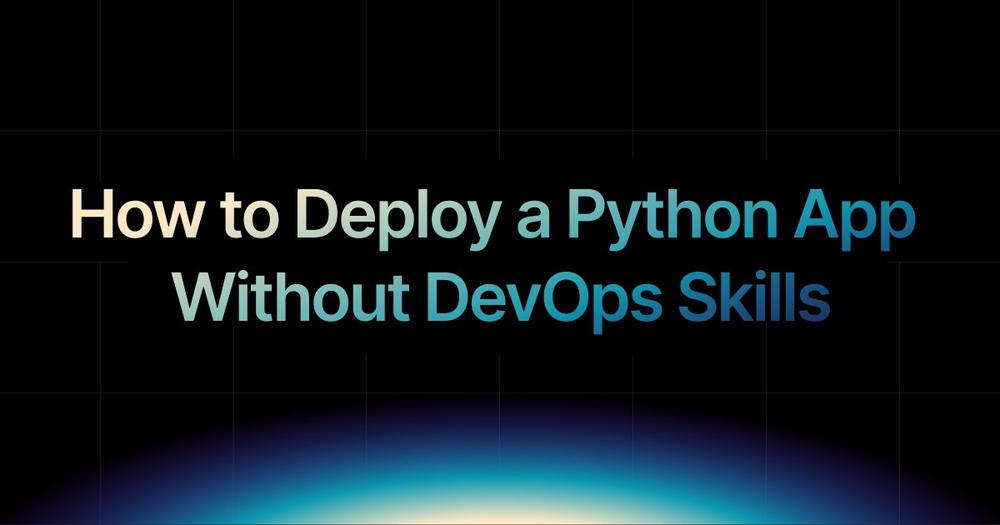
Python has become the backbone of modern development. Whether you’re building a web app with Flask, Django, or FastAPI, it’s fast to code, flexible to customise, and powerful enough to handle enterprise workloads.
But here’s the irony: deploying that Python app is often the hardest part.
You can write your backend in an afternoon, yet spend days figuring out servers, Docker containers, SSL certificates, and scaling rules.
For many developers, deployment still feels like an entirely different skillset, one that requires DevOps experience, configuration knowledge, and constant maintenance.
In 2025, the landscape is changing.
Modern Platform-as-a-Service (PaaS) platforms are eliminating the need for manual setup. They handle everything from containerization and auto-scaling to monitoring and SSL. So you can focus entirely on coding.
What Does “Deploying a Python App” Actually Mean?
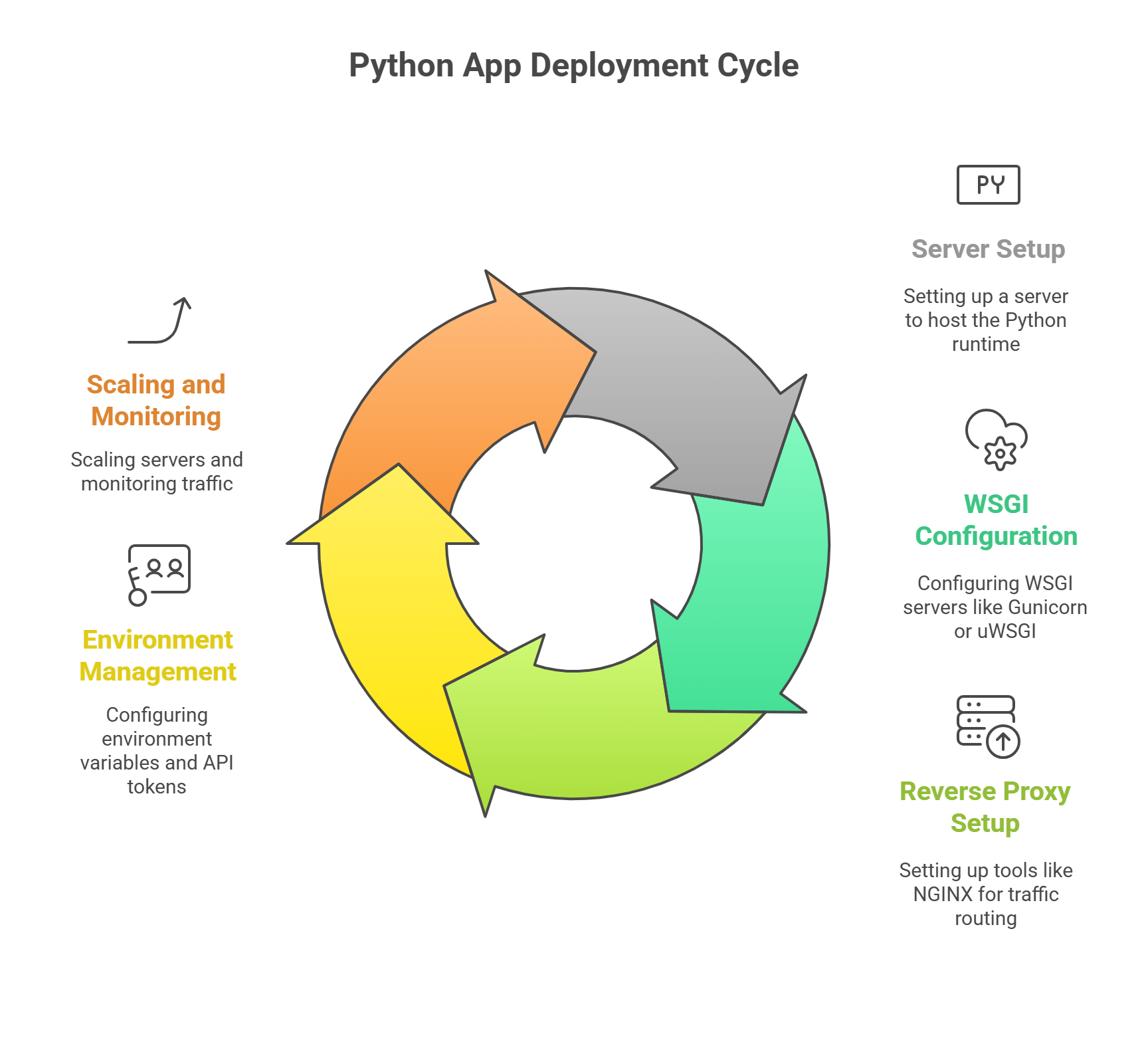 Before we compare platforms or click deploy, it’s important to understand what deployment really involves.
Before we compare platforms or click deploy, it’s important to understand what deployment really involves.
When you build a Python application, whether it’s a Flask API, Django dashboard, or FastAPI backend, the code only lives on your local machine.
Deployment is the process of making that code accessible to users worldwide through a live, secure, and scalable environment.
Sounds simple, but here’s what happens under the hood.
The Traditional Python Deployment Stack
A typical production deployment involves multiple moving parts:
- Server setup: You need a server (usually Linux-based) to host your Python runtime.
- WSGI configuration: Python web apps run behind WSGI servers like Gunicorn or uWSGI.
- Reverse proxy setup: Tools like NGINX handle traffic routing, SSL, and static file serving.
- Environment management: You must configure environment variables, secret keys, and API tokens manually.
- Scaling and monitoring: As traffic grows, you scale servers or containers, configure load balancers, and connect external monitoring tools like Prometheus or Grafana.
That’s a lot of DevOps work for someone who just wants their Python app live.
Why This Process Often Breaks Down
Even small mistakes, missing ports, misconfigured NGINX, or incorrect SSL certificates, can break a deployment.
And when you’re deploying through cloud providers like AWS or DigitalOcean manually, one wrong security group or IAM policy can waste hours.
This is why even skilled developers often look for PaaS solutions that abstract these layers away.
The Modern Approach: Zero-Config Deployment
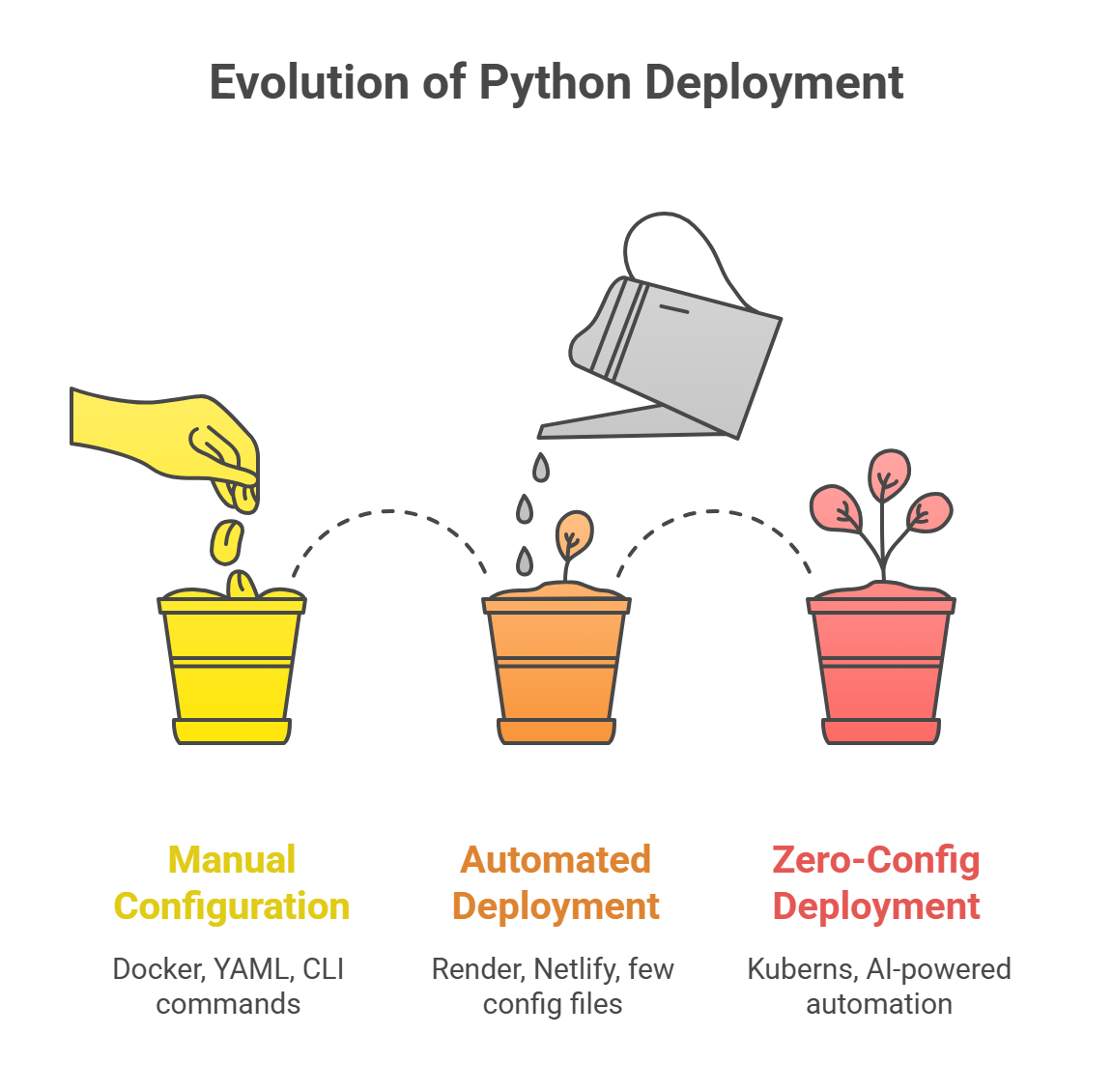 Modern deployment tools like Render or Netlify began automating parts of this stack, letting you connect your GitHub repo and deploy with a few configuration files.
Modern deployment tools like Render or Netlify began automating parts of this stack, letting you connect your GitHub repo and deploy with a few configuration files.
But in 2025, that model is being redefined again by AI-powered platforms like Kuberns
Kuberns removes all configuration steps entirely.
It detects your Python project, builds containers automatically, deploys them on AWS, sets up SSL, and scales with AI, all without needing Docker, YAML, or CLI commands.
For developers, it means you focus only on your code.
Everything else, build, infrastructure, scaling, and monitoring, just happens automatically.
Comparing Python App Deployment Platforms in 2025
The good news is that deploying a Python app today is easier than ever.
The challenge, however, is choosing the right platform, one that balances simplicity, scalability, and cost without demanding DevOps expertise.
In 2025, several popular platforms enabled deploying Python applications directly from GitHub. Let’s see how they stack up against each other.
| Platform | Setup Time | Configuration Required | Scaling | Cost Efficiency |
|---|---|---|---|---|
| Kuberns | Less than 5 min | Zero configuration | AI-based auto-scaling | Up to 40% AWS savings |
| Heroku | 10–15 min | Procfile, Buildpacks | Basic | Expensive at scale |
| Render | 15–20 min | Docker / YAML | Good | Moderate |
| Railway | 10–12 min | Minimal setup | Auto | Affordable |
| DigitalOcean App Platform | 20+ min | Manual setup | Good | High for small teams |
Kuberns
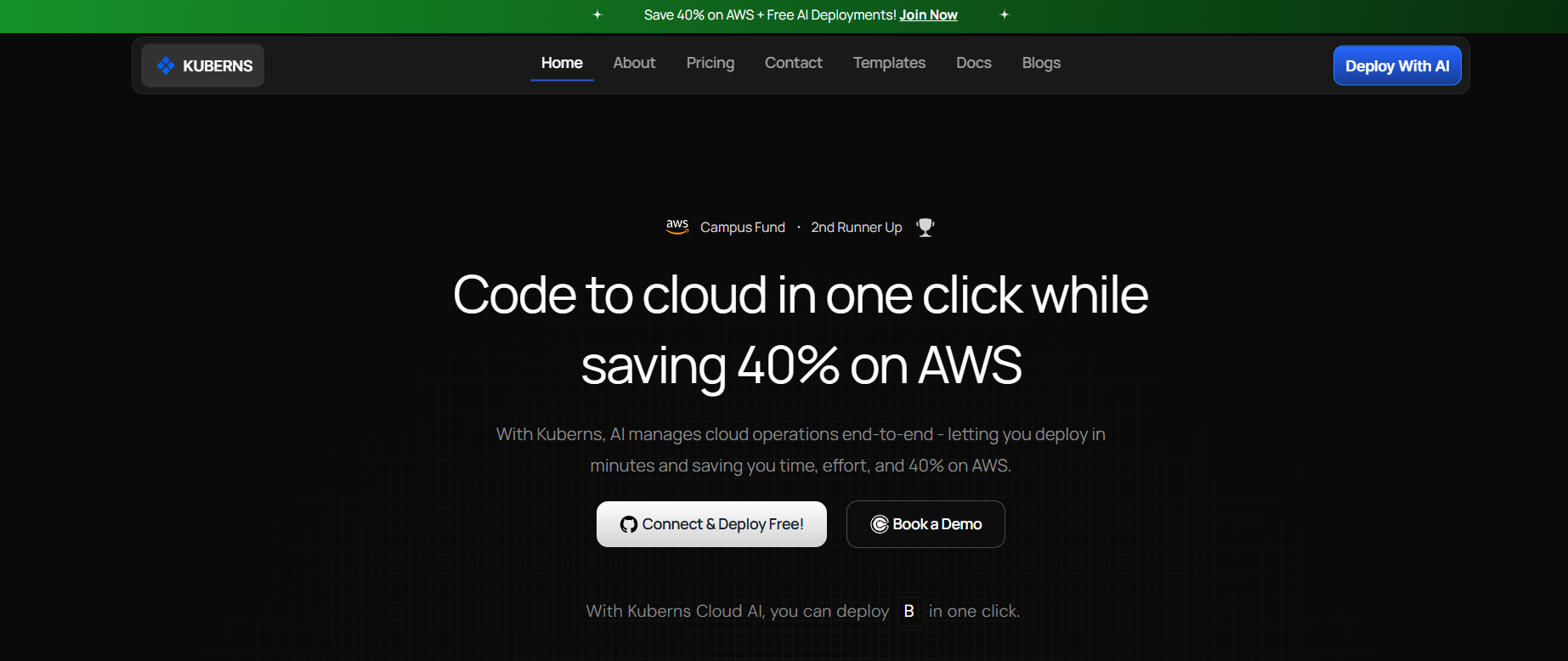 There’s Kuberns, a new-age platform purpose-built for developers who want to deploy Python apps without touching configuration files.
There’s Kuberns, a new-age platform purpose-built for developers who want to deploy Python apps without touching configuration files.
Here’s what makes Kuberns different:
- It automatically detects your Python framework (Flask, Django, or FastAPI).
- Deploys from GitHub in one click.
- Manages build, scaling, and SSL on AWS infrastructure automatically.
- Provides real-time monitoring and logs from a single dashboard.
- Delivers up to 40% savings on AWS.
Simply put, Kuberns gives you the ease of Heroku, the speed of Render, and the control of AWS, without any DevOps effort.
Heroku
 Heroku made cloud deployment mainstream by allowing developers to push code and go live in minutes. But over time, limited scaling, fewer free tiers, and higher pricing pushed many developers to seek alternatives.
Heroku made cloud deployment mainstream by allowing developers to push code and go live in minutes. But over time, limited scaling, fewer free tiers, and higher pricing pushed many developers to seek alternatives.
While still simple, it often requires a Procfile and manual scaling configuration.
Render
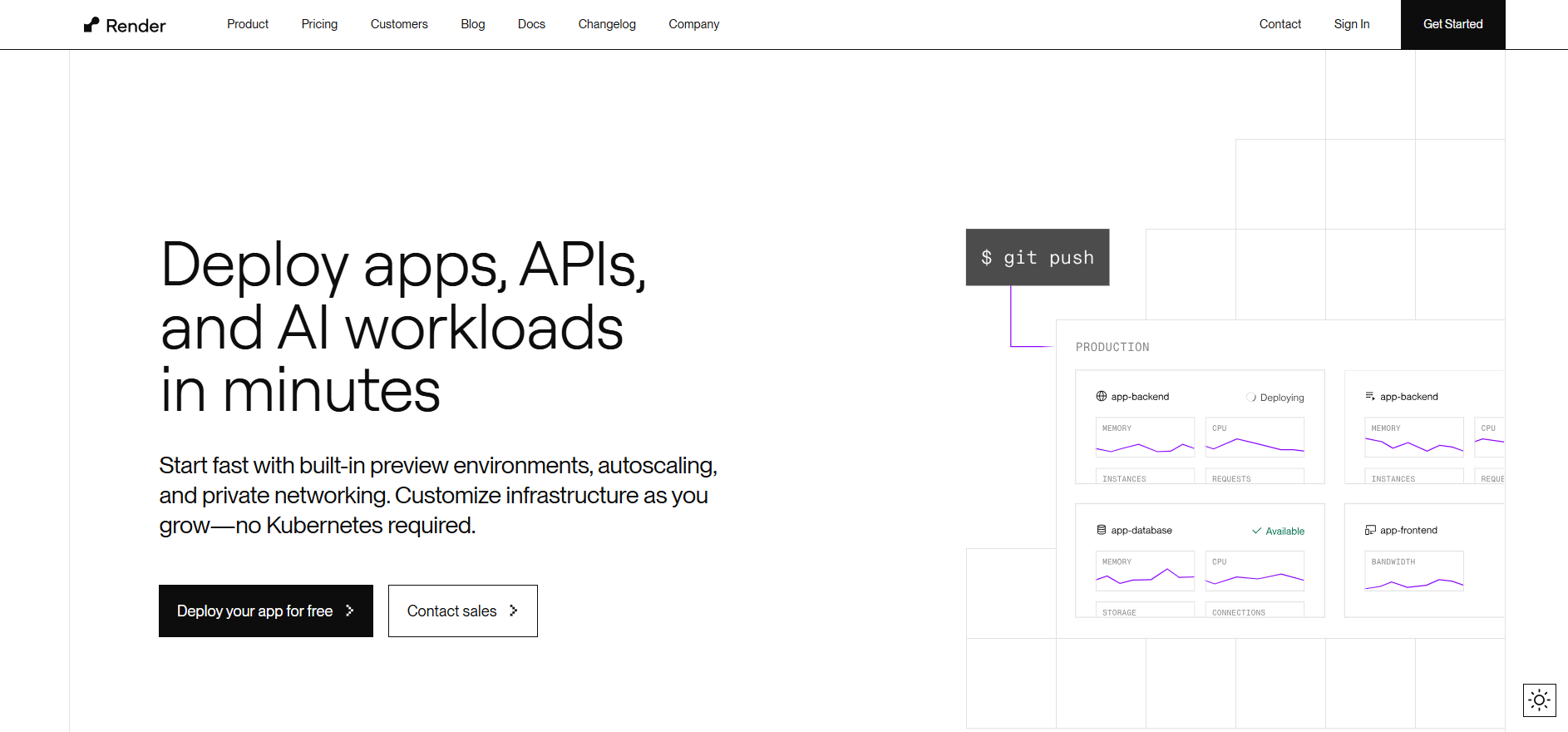 Render offers Git-based deployment and automatic HTTPS. It’s a good choice for small teams, but Flask or Django projects still need Dockerfiles or runtime YAML setup. Scaling costs can rise quickly, and background worker support is limited.
Render offers Git-based deployment and automatic HTTPS. It’s a good choice for small teams, but Flask or Django projects still need Dockerfiles or runtime YAML setup. Scaling costs can rise quickly, and background worker support is limited.
Here is the Render vs Kuberns Comparison to make the decision easier
Railway
 Railway became popular for its minimalist UI and quick GitHub deploys. However, its free tier limits compute time, and scaling or persistent storage isn’t ideal for larger Python apps. It’s great for hobby projects, not production-grade deployments.
Railway became popular for its minimalist UI and quick GitHub deploys. However, its free tier limits compute time, and scaling or persistent storage isn’t ideal for larger Python apps. It’s great for hobby projects, not production-grade deployments.
Check out the Best Railway Alternatives for Solo Developers and Startups
DigitalOcean App Platform
 DigitalOcean provides more control over infrastructure, but requires manual steps for Flask, Django, or FastAPI deployment.
DigitalOcean provides more control over infrastructure, but requires manual steps for Flask, Django, or FastAPI deployment.
You must handle build settings, SSL setup, and worker scaling manually. For small projects, it’s overkill.
Here are the Top DigitalOcean Alternatives in 2025
Why Developers Choose Kuberns to Deploy Python Apps
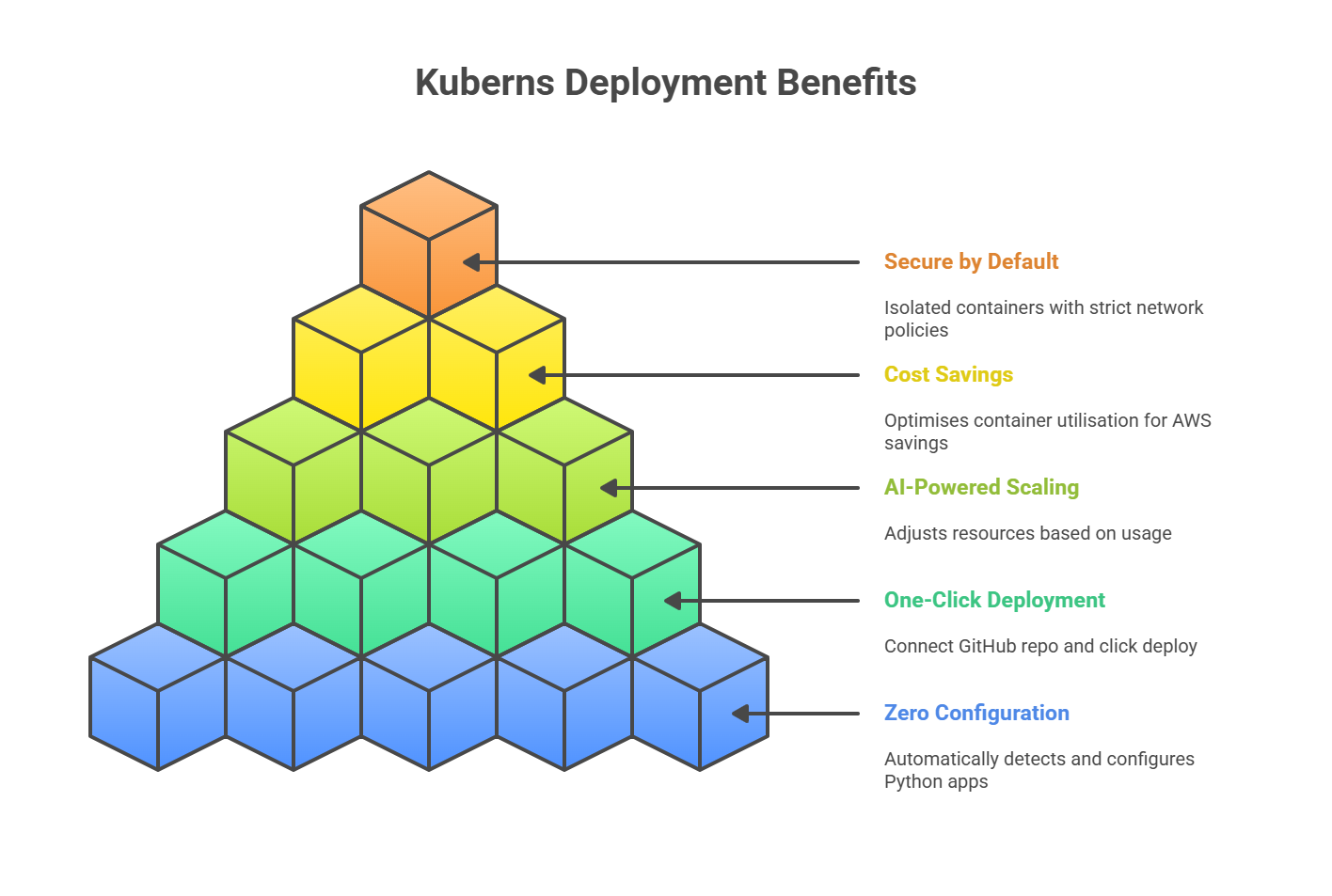 The shift from traditional cloud deployment to AI-driven automation is already happening, and Kuberns is leading that change for Python developers.
The shift from traditional cloud deployment to AI-driven automation is already happening, and Kuberns is leading that change for Python developers.
While most PaaS platforms simplify deployment, Kuberns removes complexity entirely, letting you deploy production-ready apps in minutes, without any DevOps background.
Here’s why more Python developers, startups, and agencies are switching to Kuberns in 2025.
Zero Configuration
No YAML files. No Dockerfiles. No Procfiles.
Kuberns automatically detects Python apps in your Git repository and configures everything, runtime, dependencies, ports, and build commands.
You don’t even need to choose a framework. Whether it’s Flask, Django, or FastAPI, Kuberns knows how to build and deploy it correctly.
It’s literally deployment without setup.
One-Click Deployment
Instead of running deployment scripts or setting up CI/CD pipelines, you just connect your GitHub repo to Kuberns and click Deploy. The platform automatically:
- Builds your container
- Sets environment variables
- Configures SSL certificates
- Launches the app on optimised AWS infrastructure
Every push to your main branch can even trigger automatic redeployment. It’s continuous deployment, built right into your workflow.
AI-Powered Auto Scaling and Monitoring
Traditional PaaS tools make you choose instance sizes manually, meaning you’re either overpaying for idle servers or underprepared for traffic spikes. Kuberns solves that using AI-based scaling.
It automatically adjusts CPU and memory resources based on usage. Plus, you get real-time logs, performance metrics, and uptime alerts directly in your dashboard. No external logging or monitoring setup required.
Up to 40% AWS Cost Savings
Kuberns runs entirely on AWS infrastructure, but with smarter resource management. Instead of charging extra platform fees, it optimises container utilisation and passes the cost savings directly to users, helping teams cut AWS bills by up to 40%.
This makes Kuberns not just the easiest, but also the most cost-efficient way to deploy Python apps at scale.
Secure by Default
Every app deployed on Kuberns runs inside an isolated container with strict network policies. SSL certificates are applied automatically, and environment variables are encrypted at rest. There’s no need for manual certificate renewal or secret management.
Security is built in, not added later.
Kuberns brings together AI automation, AWS reliability, and zero DevOps friction, giving Python developers exactly what they’ve been asking for: a platform that just works.
Watch It in Action:
If you prefer a visual walkthrough, check out this short video on YouTube.
It shows the exact steps from connecting your repo to going live in under 5 minutes.
Real-World Comparison: Time and Effort
To understand how Kuberns changes the deployment experience, let’s compare it with how most developers still deploy Python apps today, using traditional PaaS platforms or manual cloud setups.
In production, time and cost matter just as much as uptime. Every hour you spend configuring servers or debugging build pipelines is an hour you’re not shipping features.
Here’s how the numbers stack up.
| Metric | Traditional PaaS / Manual Setup | Kuberns |
|---|---|---|
| Setup Time | 1–2 hours (server + runtime config) | Under 5 minutes (one-click deploy) |
| Configuration Files | 3–5 (Dockerfile, YAML, Procfile, NGINX) | None required |
| DevOps Skills Needed | High | Zero |
| Scaling | Manual or tier-based | AI auto-scaling |
| Monitoring & Logs | Third-party integrations (Datadog, Prometheus) | Built-in real-time monitoring |
| SSL & Domain Setup | Manual or semi-automatic | One-click SSL with custom domain |
If you’re deploying a single app, the time savings are clear. But for teams managing multiple Python projects, the difference is exponential.
Let’s say you run an agency deploying five Flask or Django apps each month.
- On a traditional setup, ~10 hours per month go into deployment.
- On Kuberns: less than 30 minutes total, all automated.
That’s 9.5 hours saved monthly, per developer. Multiply that by your hourly rate, and you’ll see how much cost and productivity Kuberns recovers automatically.
Migrating Your Existing Python App to Kuberns
If you already have a Python app deployed on platforms like Render, Heroku, or DigitalOcean, moving it to Kuberns is not only easy, it’s one of the smartest upgrades you can make in 2025.
Migration isn’t just about switching hosts. It’s about freeing yourself from repetitive configurations, high costs, and manual scaling limits.
Here’s how and why thousands of developers are migrating their Python apps to Kuberns.
How to Migrate Your Python App to Kuberns
Migration takes less than ten minutes. Here’s the process:
- Connect Your Git Repository Log in to dashboard.kuberns.com, connect your GitHub account, and select the repository where your Python app code lives.
- Import Environment Variables: Copy your current environment variables from Render, Heroku, or DigitalOcean, and paste them into the Kuberns dashboard. These are encrypted automatically.
- Click “Deploy” Kuberns builds and deploys your app using its AI-powered build system, creating an optimised AWS container automatically.
- Add Your Custom Domain (Optional) Link your existing domain to the new deployment. SSL certificates are automatically generated and activated.
- Monitor and Scale Effortlessly Once live, monitor performance, logs, and scaling behaviour directly from your dashboard.
No downtime. No redeploy scripts. No reconfiguration.
Deploy Smarter, Scale Faster
Deploying a Python app shouldn’t feel like setting up an entire infrastructure department. Whether you’re building with Flask, Django, or FastAPI, your time is best spent coding, not configuring servers or debugging deployment scripts.
That’s exactly what Kuberns was built for.
With one click, you can go from code to live production in minutes, no Docker, no YAML, no command-line chaos. Behind the scenes, Kuberns automatically builds, scales, and monitors your Python app on AWS infrastructure while saving you up to 40% in cloud costs.
Here’s the difference:
- Traditional deployment = manual steps, scripts, and surprises.
- Kuberns deployment = one click, full automation, total control.
Whether you’re a solo developer deploying a side project, a startup launching fast, or an enterprise scaling production workloads, Kuberns gives you the same power and simplicity, zero DevOps required.
So the next time you wonder, “How do I deploy my Python app easily?”
The answer is simple: Deploy it with Kuberns

Frequently Asked Questions
Q1. Can I deploy any Python app on Kuberns?
Yes. Kuberns supports all major Python frameworks, including Flask, Django, and FastAPI. The platform auto-detects your app type and configures the runtime automatically, no need for Dockerfiles or custom scripts.
Q2. Do I need DevOps or Docker knowledge to deploy on Kuberns?
No. That’s exactly what Kuberns eliminates. You don’t need Docker, Kubernetes, or NGINX setup experience. The AI engine takes care of all infrastructure, scaling, and SSL configuration automatically.
Q3. How long does it take to deploy a Python app on Kuberns?
Usually under five minutes. Once you connect your GitHub repository, Kuberns builds, deploys, and configures your app automatically, including SSL and monitoring.
Q4. How secure are Python deployments on Kuberns?
All apps run inside isolated containers with encrypted environment variables and automatic HTTPS. SSL certificates renew automatically, and enterprise users can request private AWS VPC setups for compliance-ready hosting.
Q5. Can I migrate my existing Python app from Render, Heroku, or DigitalOcean to Kuberns?
Yes. You can import your GitHub repository, copy your environment variables, and redeploy with one click. No code or configuration changes are required. Here is the guide for you.
Q7. What kind of monitoring does Kuberns provide?
Kuberns includes a built-in dashboard for logs, CPU/memory usage, and deployment history. You can track performance, get alerts, and scale resources automatically without using external tools.